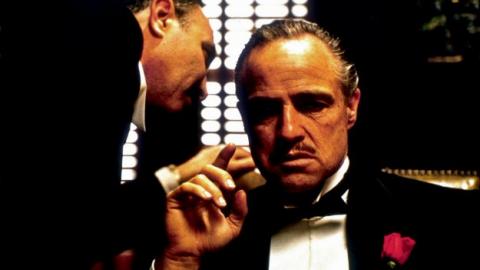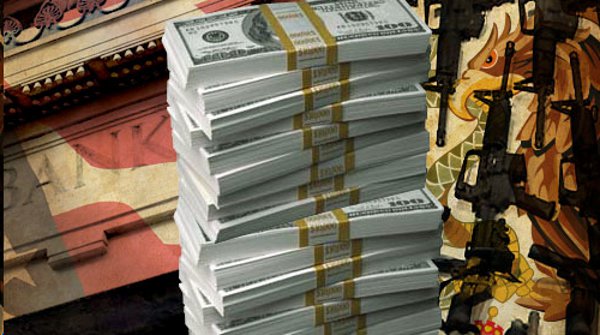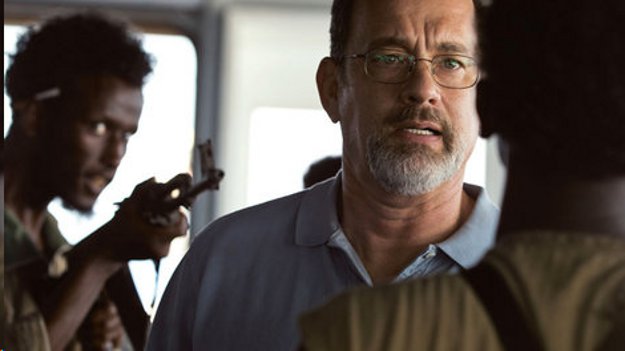Crime Does Pay: Global mafias’ $2 trillion bonanza

Transnational organized crime generates $2 trillion in revenue per year globally, roughly the size of Britain’s economy, according to the United Nations Office on Drugs and Crime.
Wonder how much money those fake Luis Vuitton handbags and DVDs of the latest Hollywood hits bring in? At $654 billion annually, counterfeiting and intellectual property piracy tops the global list of most lucrative illicit activities.
The global drug trade comes in second at a not-too-shabby $411 billion; human trafficking and prostitution next at $240 billion; financial crimes fourth at $194 billion; and bringing up the rear of global illicit activities’ biggest hits, environmental crimes such as illegal logging, mining and waste disposal at $138 billion.
Not Your Father’s Mafia
Today’s criminal networks are nothing like those that sprang up first in Italy more than a century ago and later in other parts of the world as Italians brought their knowhow and organizational skills to their adopted countries.
In strategy, sophistication, and reach 21st century criminal organizations function more like multinational corporations.
Up to as late as the 1970s, operating almost entirely domestically, organized criminals simply marked out a territory (the Gambinos, New York City, for example) extorting local businesses and running illicit markets in gambling, drugs, and prostitution.
Today, criminal organizations, such as the Mexican drug cartels, operate across borders with much of their businesses decentralized and run by professional associates rather than family members.
With the globalization of trade and consumer demand along with advances in communications and transportation, it was a natural progression for organized criminal groups to move from national to transnational operations.
In addition, the transition of much of what we do to the Internet and mobile phones has created a wealth of opportunities to expand their activities.
For example, the market in illegally obtained financial and personal information and other cyber crimes is the fastest growing segment of organized crime. The cost of cyber crime is larger than the combined cost of trafficking in cocaine and heroin, according to Interpol and will continue to grow without a concerted coordinated global effort to combat it.
Transnational crime touches all four corners of the world and just about every large industry either directly or indirectly.
Mining for Opportunities in Africa
In addition to well-documented illegal trade in minerals, exotic animals, timber, human beings, and arms, Africa has become the main transit point for tens-of-billions of dollars worth of drugs traveling from Latin America to Europe having grown by a factor of four in recent years. An illegal arms trade between Eastern Europe and the region’s various insurgent and terrorist groups has proven to be particularly lucrative for criminal groups based in the two continents as well.
Piracy, which gained a measure of fame with Tom Hank’s Oscar-nominated film, Captain Phillips, peaked in 2012, remains relatively small (around $1 billion annually) compared to more lucrative trade in human beings, minerals, and drugs.
Asia on the Rise
In addition to leading the world in economic growth over the past decade, Asia has taken global crime’s center stage.
According to the U.N., 60 percent of human trafficking happens in Asia. China is the main source of counterfeit goods. India is the leading producer of counterfeit medicines. Iran and Afghanistan produce nearly three-quarters of the world’s opium. And the harvesting of human organs across the region supports much of the world’s demand, the vast majority of it in Europe and the U.S.
China is the third largest market for criminal gangs generating $260 billion in revenue annually, but is rising quickly given the country’s seemingly insatiable need to grow economically whether by legitimate or illegitimate means.

Demand-Driven Europe
More than $500 billion in drugs, humans trafficked for sex, counterfeit goods, and illegally sourced minerals and timber teem into Europe through its porous southern tier annually, making it the second largest market for illegal goods and services globally after the U.S.
The lack of a coordinated effort by the European Union to combat transnational organized crime has given old criminal networks like the Italian mafia a second life and allowed new ones like the Russian and Serbian mobs to flourish.
Latin America: Crime and No Punishment
Despite the U.S.’ and local governments’ best efforts, organized criminal groups continue to grow unabated, threatening the stability of governments and the security of citizens throughout the region.
El Salvador, Guatemala, and Honduras have among the world’s highest crime rates in the world (outside South Africa) largely due to drug cartels’ power to intimidate governments and citizens alike.
Mexico’s cartels earn more money (an estimated $28-40 billion a year) from selling drugs than Mexico earns from oil exports. Human smuggling, primarily across the border to the U.S., has become a major source of revenue for the cartels as well.
Give Me Your Tired, Your Poor and Your Criminals Yearning to Earn Billions
The U.S.’s appetite for illegal drugs, cheap labor, quick money, and fake designer goods has made it the biggest market for global criminals, generating more than $620 billion annually for Mexican drug cartels, Russian cyber-criminals, Nigerian scam artists, and Chinese factory owners.
Criminal gangs tied to the drug trade swelled to an estimated 1 million members in recent years, according to the FBI. The gangs keep cocaine, meth and marijuana flowing from south to north, keep wholesale and street-level dealers in line, and make sure the cartels’ ill-gotten gains are laundered and sent south.
Terrorists, including those who threaten the U.S., increasing are turning to transnational organized criminals to generate funding and acquire logistical support and knowhow to carry out violent acts, according the National Security Council.
The Justice Department reports that half of the 63 international drug-trafficking organizations had significant relationships with terrorist groups, using them to transport drugs, launder money, and provide muscle.
Terrorists groups are also engaged in kidnapping for ransom, weapons trafficking, and human smuggling to raise money for their operations.

The Kingpins of the Criminal World
There are hundreds, if not thousands, of criminal groups spread across the globe. The smaller ones almost all operate solely on their home turfs. Many of the larger ones, particularly those engaged in more sophisticated and capital intensive activities such as drug smuggling, counterfeiting, human trafficking, and illegal trade in commodities such as oil and timber, operate across borders. The transnational criminal organizations are assisted by bankers, accountants, and lawyers laundering and investing their ill-gotten gains.
Of the biggest and most sophisticated global criminal groups, five stand out:
The Italian Mafia
Italian criminal organizations have long been the model for other criminal groups. The main groups are the Sicilian Mafia, or “Cosa Nostra,” the Neapolitan Camorra, and the Calabrian ‘Ndrangheta. The Cosa Nostra is considered the largest and most important of the three. The Sicilian Mafia has moved much of its criminal activities from a rural focus to a focus on industrial and business opportunities and from a regional and national network to an international one.
The Russian Mafiya
Since the fall of the Soviet Union, the Russian Mafiya has emerged to become among the largest and the world’s most powerful organized crime networks engaging in a wide range of illicit activities including cybercrime. A gray area between legal and criminal business activity in Russia has allowed the Mafiya to penetrate most areas of the Russian economy. Many have ties to the government and the most powerful and sophisticated operate internationally, including the Odessa and Chechen mobs, which have set up shop in New York and New Jersey.
The Asian Triads
The Asian Triads are based primarily in Hong Kong, but are also active in Taiwan and Mainland China. There are more than 160,000 Triad members in Hong Kong belonging to approximately 50 different groups. The Triads have extensive overseas networks, including the United States where they have close ties with youth gangs that exist in many Chinese communities. The Triads’ main businesses are trading in counterfeit goods and importation of heroin from Southeast Asia to the U.S.
The Nigerian Criminal Enterprises
The Nigerians are relatively new to the global criminal scene. With political corruption rampant and limited economic opportunity, many educated Nigerians turned to criminal activities to make money. The Nigerians have large drug-trafficking operations focused on importing heroin into the United States. They also engage in fraud and extortion, including credit card fraud.
The Colombian and Mexican Cartels
Unlike other organized crime groups that tend to be involved in a range of illegal activities, the Colombians and Mexicans focus their efforts almost exclusively on the drug business. The cartels have merged corporate and criminal activities developing an industry that is based on management principles that include specialization, decentralization, and division of labor.
The main drug cartels, centered in Cali and Medellin, control large production and distribution network with vast agricultural enterprises dispersed throughout the Andes.
Mexican organized crime groups’ main advantage is their easy access to the world’s largest market for illegal drugs, the United States. Approximately three-quarters of South American cocaine and 80 percent of foreign-grown marijuana enters the U.S. through Mexico and is handled by the country’s cartels. The Mexican cartels also produce 30 percent of the heroine consumed in the U.S. and increasingly dominate the manufacturing, sale, and distribution of meth, ecstasy, and illegal steroids.

Author Bio:
Mark Goebel is a contributing writer at Highbrow Magazine.




























































































































































































































































































































